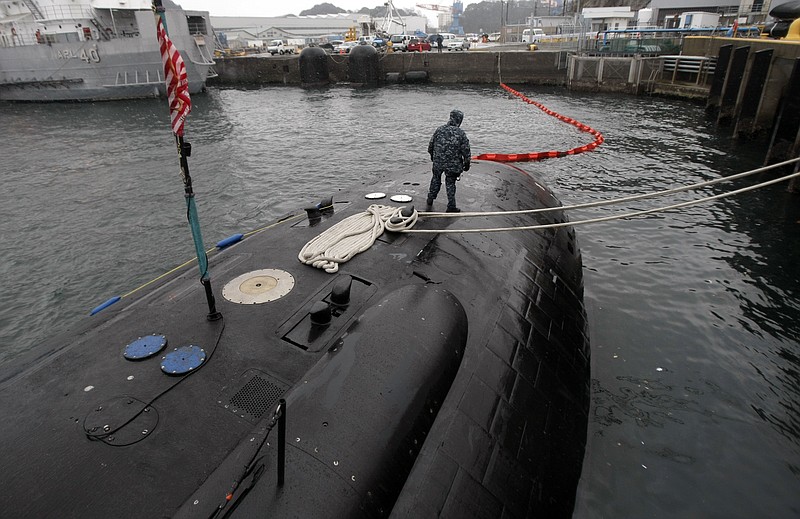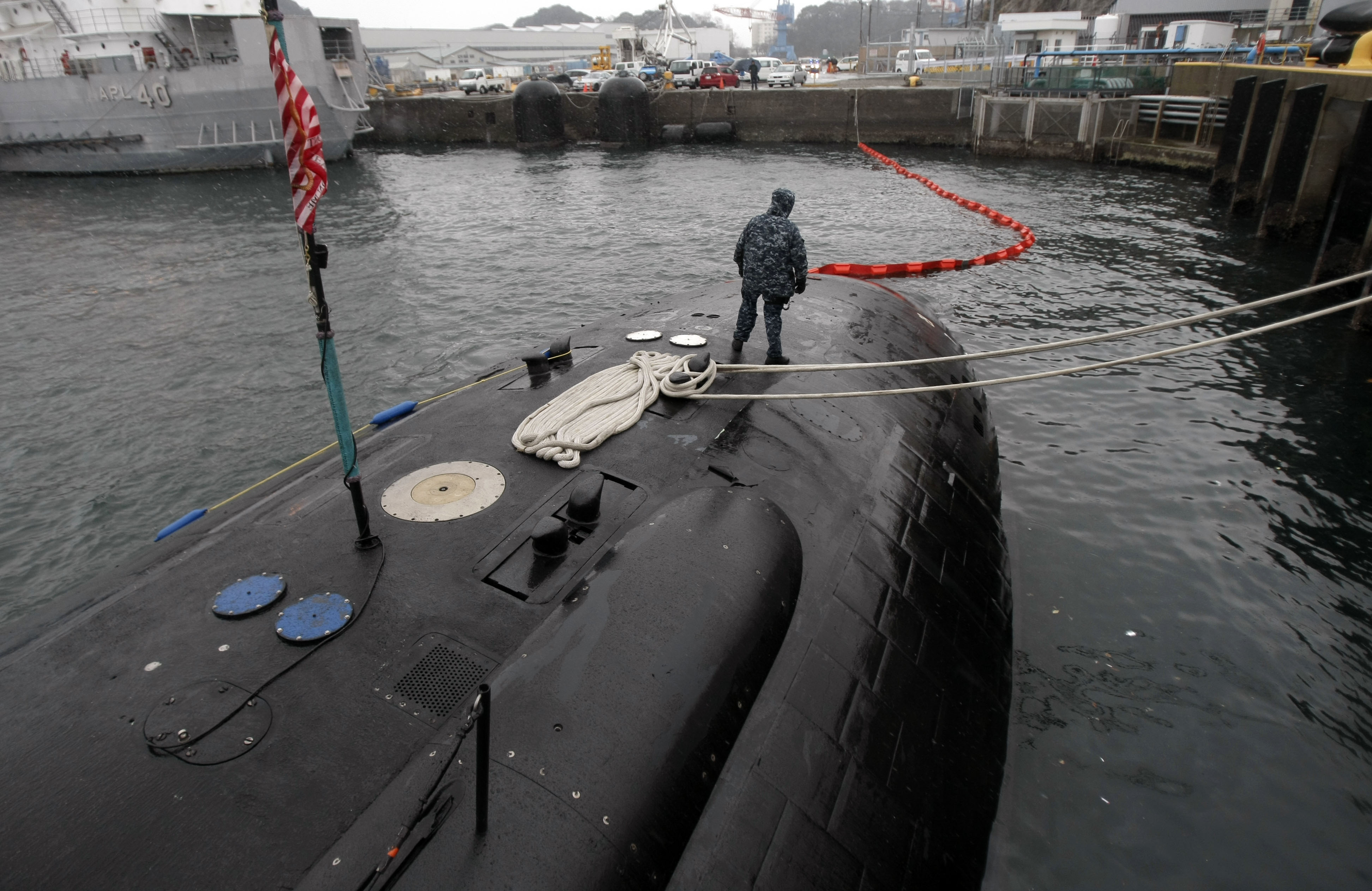YOKOSUKA, Japan - As if life on a submarine wasn't already stressful enough, with its cramped quarters, long work hours and weeks at sea, thousands of smokers on the U.S. Navy's submarine fleet recently got an unwelcome ultimatum from Uncle Sam.
As of last month, all submarines in the U.S. Navy are officially smoke free - and it's been a tense transition.
For some officers and sailors, the new policy aiming to reduce secondhand smoke risk has been that extra push they needed to make the decision to quit. But for many more, it means a little more effort at irritation management and a lot more stocking up on nicotine patches, chewing tobacco and snuff before heading out to sea.
During a recent port call in Japan by the nuclear-powered USS Charlotte attack submarine, Petty Officer Luke Riblet said his first extended smokeless assignment at sea has been rough.
"You can feel it. It's like a pull at your chest," the 26-year-old from Cocoa Beach, Florida, told The Associated Press. "You get irritated a lot easier. It was nice to have a smoke and wind down. This lifestyle can be pretty stressful."
Riblet, a submariner for seven years, still smokes about half a pack a day, just not when he's at sea.
"It's definitely been hard on some of the guys. But it's going smoother than I expected," said Cmdr. Richard Young, commanding officer of the Charlotte.
"Everybody understands the policy - there's no smoking on board," he said. "That's as clear as can be. But I'm not sure everybody is 100 percent sold on the idea."
Young said that of the 140 or so crewmembers on the Charlotte, which is based in Pearl Harbor, about one-third were regular smokers before the ban. Other officers aboard put the figure at closer to one-half.
"A lot of people smoked," Young said. "Some more than others."
Like most submarines, the Los Angeles-class Charlotte had a "smoke pit," or designated smoking area, in the engine room at the very back and very bottom of the boat, a spot that typically was the boat's nerve center. Only three men were allowed to light up at a time, so lines formed quickly.
Young said when he first entered the Navy, smoking was common all over the subs.
He said the order to go completely smokeless was made largely because of the impact of secondhand smoke on the crew as a whole, rather than simply the health of the smokers themselves. A 2009 study found that nonsmoking submarine sailors were testing positive for nicotine exposure after returning from patrols, despite smoking being confined to certain areas.
Smoking is still allowed on surface ships, which have better ventilation.
"As a non-smoker, it's nice to be able to walk around without walking through smoke," Young said.
After the decision to go smokeless on the Navy's fleet of 71 submarines, commanders had a few months to decide how to best implement the orders on their individual boats.
Young said that on his sub officers were trained in how to help crewmembers quit, smoking cessation classes were put together and the boat's sick bay was stocked with nicotine gum and nicotine patches. Prescription drugs to help kick the habit, such as Chantix and Zyban, aren't available to submariners because psychotropic drugs are forbidden for the 11,600 sailors assigned to subs.
Sailors, of course, are also finding other ways to get their nicotine fix.
"Smokeless tobacco hasn't been banned, so a lot of people have turned to dip and snuff," said Benjamin Grover, the Charlotte's chief hospital corpsman. Grover, 36, of Rockville, Maryland, said he hasn't seen any major nicotine fits, though some of the crew have been noticeably more on edge.
"The heavier smokers just seem to have time on their hands that they don't know exactly what to do with," he said. "They used to have smoke breaks or smoke after they finished their shifts. Now, they aren't sure what to do with themselves during the time they used to spend smoking."

